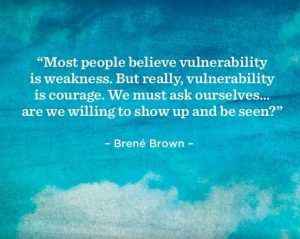
As infants and through our formative years, we are attached to our primary caregivers. Our primary caregiver is like the sun to us as we orbit them and live our lives by their will. From our wake and sleep times to our diet and emotions, our caregivers play a crucial role in the development of our sense of self.
While secure and healthy attachment with our caregiversfoster a positive sense of Self, unhealthy attachments may promote a disowning of the same. Because we are born with virtually no understanding of our world and our place within it, our sense of self develops as a response to the presence or absence of a secure attachment with our primary caregivers as we learn how to relate to our environment. ‘Primary caregivers’ may be our biological or adoptive parents, older siblings charged with caring for us, members of the extended family or even role models in institutions such as church leaders. We become attached to those with whom we are highly involved in our childhood and we seek to gain their approval.
When we live our lives in the light or shadow of our caregiver, it is natural for a child to conclude that their mother and their father are omnipotent. This perception motivates children to willingly direct their behaviours to evoke praise or approval from their parents. So, what happens when our caregivers respond to our behaviour with disinterest, anger or beratement?
When our actions and behaviours are met with ambivalence, resentment or contempt, we have limited resources to manage our sense of rejection and shame. Considering that a parent is fallible is too painful to bear, so children do the only other thing they can do – internalize the belief that if their parents are not meeting their needs, it must be because they are unlovable, unworthy and unwanted.
As we age, shame demonstrates itself in our life as its effects cause us to withdraw or to engage in coping mechanisms such as addictions in order to mask the true impact of the shame that we harbour in our brains and nervous systems.
Shame in Relationships

Later in life, we may feel that we are beyond these misleading or flawed perceptions of ourselves… that is, until a circumstance takes us back to unresolved feelings of shame and self-loathing and we find ourselves emotionally triggered and willing to shift blame onto others to hide from emotional pain.
When we are emotionally triggered, our maladaptive behaviours – the mechanisms that allowed us protection from feelings of shame while we were growing up – come out from beneath the surface of a false self (the one that, on its surface, appears to be confident and whole). By way of example, we may save face by responding to our partner’s assertion that our behaviour has hurt them with explosive, belittling remarks such as:
• You’re too sensitive
• I didn’t say that!
• Haven’t you ever made a mistake?
These face-saving tactics may have gotten us through our family dynamics as children, but they are unhelpful enemies of intimacy in our adult relationships. In relationships, the need to hide from feelings of worthlessness or of not being good enough means that vulnerability, the glue that binds couples in true intimacy, is inaccessible. The result is often two partners who use the masks of their respective personas to keep one another from the pain of vulnerability – of truly being seen.
Toxic Shame and Narcissism
In extreme cases of abuse or neglect, shame becomes so pervasive in the child that they dissociate from grounded reality and begin to interact with the world from a state of constant denial. In order to contend with these profound feelings of self-loathing, narcissists develop manipulative behaviour such as gaslighting, withdrawing through silence, or blame to disown personal feelings of shame. They may perceive judgment from a partner and respond by denigrating their partner to the point of vulnerability, weakness and compliance before experiencing a resurgence of confidence. From that place of false confidence, they then continue to assert blame on the other while aggrandizing the self. It can be difficult to see the insidiousness of narcissism at first, until the emotional abuse and unhealthy dynamics within the relationship are firmly established and bonded in trauma.
Toxic Shame and Codependency

Narcissism is not the only potential outcome of long-term childhood abuse and neglect. Environments in which children are made to feel unsafe, unheard and unacknowledged often results in codependency – the fear of being alone disguised as love. While narcissists protect themselves from shame by disowning their true self in lieu of a contrived God-like sense of self, codependents forego their needs in service of meeting the needs of others in relationship with them.
Codependents often become the emotional caregivers of their family in order to keep the peace and earn the validation of others. The codependent is reliant upon gaining the approval of others to confirm their worth and mask their self-love deficit. In this way, a relationship between a narcissist and a codependent is a perfect match as the narcissist continuously takes, and codependents compulsively give.
Forfeiture of personal, physical and emotional boundaries and needs to validate ourselves creates an unhealthy identification with the ‘helper’ role, and relationships are unbalanced as a result. Anxiety, depression and repressed resentment frequently accompanies those in codependent relationships.
Compounded Shame
Although feelings of shame typically originate in our childhood, shame emotions compound over time. The result is an accumulation of shame-inducing thoughts and feelings that inform how we interpret and perceive our reality and how we interact and relate with others. Rather than interact with our environment from a place of security and self-acceptance in order to grow and learn, we are less able to be in the present moment during our interactions because our energy and attention is being quietly diverted to protecting ourselves from shame and vulnerability. We begin to assign meaning and motivation to the actions and words of others, whether accurate or not, to keep from being hurt. The more we attempt to mitigate, eradicate or hide feelings of shame, the more likely we are to engage in behaviours that induce further shame. This is often seen in an inability to control compulsions such as overeating, substance abuse or harsh and frequent self-judgment and criticism.
The Way Out
The suggestion that our inner shame is informing our actions, decisions and behaviours can be difficult to accept for many of us. The term can seem vague and be difficult to identify in our own lives at first. Where it comes to overcoming shame, a curiosity about ourselves and our world is a necessary place to start. Although often our instinct is to blame our environment and the people in it for the way we experience life, turning our inquiries inward is where the magic happens.
 It takes time to quell feelings of shame through emotional literacy and awareness as well as awareness of our inner dialogue. This can only be effective when we approach ourselves with the understanding that we are worthy, lovable and enough – we have to feel that it is safe to treat ourselves with love and care. From here, we become more able to identify thoughts and inner dialogue that is degrading, unlovable and filled with contempt. Loving ourselves authentically gives us the space we need to be curious about ourselves and to develop new neurocircuitry that supports our personal development, learning, healthy establishment of boundaries and ability to offer others the same through non-judgment.
It takes time to quell feelings of shame through emotional literacy and awareness as well as awareness of our inner dialogue. This can only be effective when we approach ourselves with the understanding that we are worthy, lovable and enough – we have to feel that it is safe to treat ourselves with love and care. From here, we become more able to identify thoughts and inner dialogue that is degrading, unlovable and filled with contempt. Loving ourselves authentically gives us the space we need to be curious about ourselves and to develop new neurocircuitry that supports our personal development, learning, healthy establishment of boundaries and ability to offer others the same through non-judgment.
It is often helpful to work with a trained therapist as we undertake our journey through shame and into selflove. A skilled therapist assists us in seeing the good in ourselves and offers safe space to explore ourselves deeply, and to mine the insight and inner wisdom required to begina course of personal development through unwavering self-love.

